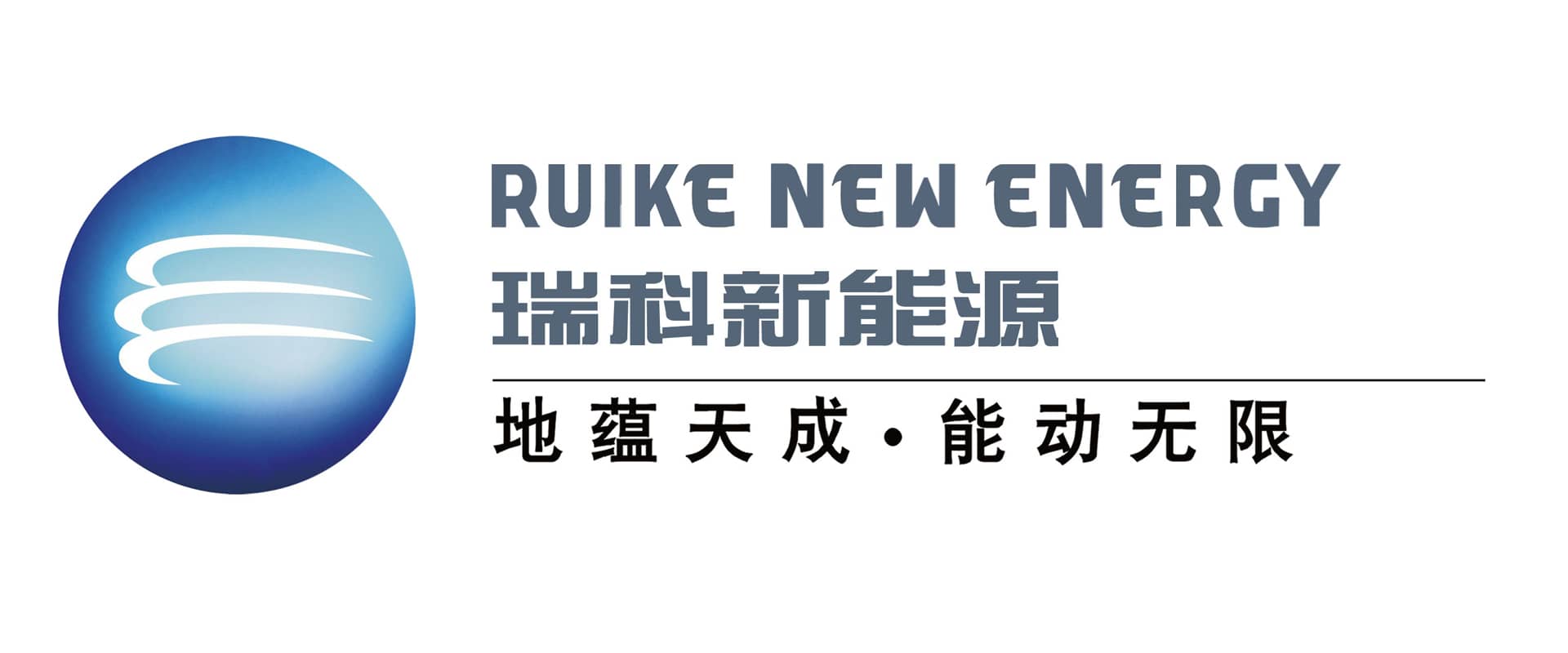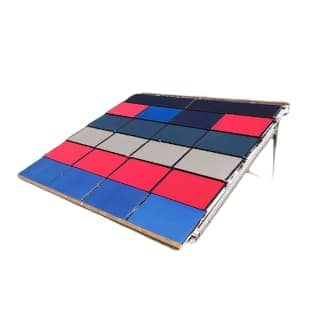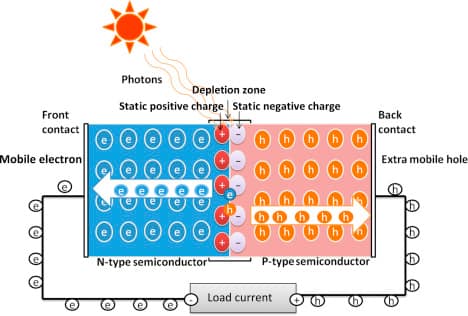Solar Panels
Solar PV modules
We offer solar panels that combine efficiency and reliability with an aesthetic exterior. Our comprehensive service covers everything, from initial consultation to after-sales support.
Get in touch for price quotes or book a free and noncommital discovery call.
Receive Pricing Information
Our Solar Panel Manufacturers

Headquartered in Zhongshan, China, Ruike New Energy was jointly established in 2015 by China’s leading green energy enterprise Mingyang Smart Energy Group, Ltd. and Clean Energy International, Inc.
As China’s leading provider of thinfilm float glass, Ruike is committed to research and development as well as production of high-quality PV modules and integrated energy solutions. The company has a reputation for combining cutting-edge technology with long-term reliability. Thus, Ruike has become one of the global top 5 solar glass manufacturers.
Our services
We are proud to integrate Ruike solar glass into our global supply chain structure. As a result, wholesale purchasers benefit from a paticularly low solar glass cost, as our products come directly from the factory. Get in touch with us to receive a solar panel price quote or consult us in a free and noncommital consultation call online.

Please get in touch with us if you would like to receive in-depth consultation about our supply services and solutions for our Ruike products or to request a quote.
Standard PV Module
- Cost-effective
- Maximum Efficiency
- Variants: 3
- Transmittance: 0%
- Efficiency: 145W – 160W/㎡
- Rooftop & Ground-Mounted Systems
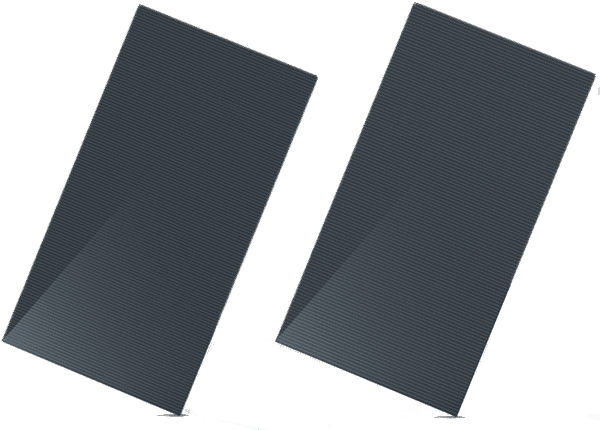
Standard PV Module
This the “vanilla”-Version of our solar glass modules. They are optimized for maximum efficiency and dispense with any aesthetic components. Therefore, our standard solar glass modules achieve an efficiency of up to 160W per square metre.
These cheap solar panels are very popular in downtown areas due to their industrial look. They look least conspicuous on roofs, but are also suitable for commercial solar power systems on the ground.
Common Applications
- Solar glass roofs
- Curtain walls
- Sun blinds
- Sunshades
RK Standard PV Module Solar Glass Models
RK-105
- Nominal Power (Pmpp): 105Wp
- Efficiency: 145W/㎡
- Short Circuit Current (Isc): 1.24A/2.48A
- Open Circuit Voltage (Voc): 123.8V/61.9V
- Current at Pmax (Impp): 1.08A/2.16A
- Voltage at Pmax (Vmpp): 97.2V/48.6V
Product Data
| Mechanical Specifications | |
| Dimensions | 1200×600×6.8mm |
| Weight | 12kg |
| Area | 0.72㎡ |
| Structure | 3.2CdTe+0.5EVA+3.2C |
| Type | CdTe |
| Junction Box | Back,Side,Cable 2.5m㎡,650±10㎜ |
| Connectors | MC4 |
| Electrical Specifications | |
| Nominal Power (Pmpp) | 105Wp |
| Power Tolerance | ±5% |
| Short Circuit Current (Isc) | 1.24A/2.48A |
| Open Circuit Voltage (Voc) | 123.8V/61.9V |
| Current at Pmax (Impp) | 1.08A/2.16A |
| Voltage at Pmax (Vmpp) | 97.2V/48.6V |
| Light & Heat Performance | |
| Transmittance | 0 % |
| Outward Reflectivity | 8 % |
| Inward Reflectivity | 30 % |
| U-value (W/㎡·K) | 5.76 |
| Sc | 0.31 |
| Rw (dB) | 34 |
| Specifications for System Integration | |
| Max System Voltage | DC1000V(IEC) |
| Max Reverse Current | 6 A |
| Snow Load | 5400 Pa(IEC) |
| Wind Load | 2400 Pa(IEC) |
| Temperature Range | -40℃~+85℃ |
| Anti-hail Range | IV |
| Protection Level | IP65 |
| Burning Class | A2 |
| Anti-hail Range | IV |
| Temperature Coefficient (Pmax) | -0.28%℃ |
| Temperature Coefficient (Voc) | -0.28%℃ |
| Temperature Coefficient (Isc) | +0.04%℃ |
RK-110
- Nominal Power (Pmpp): 110Wp
- Efficiency: 152W/㎡
- Short Circuit Current (Isc): 1.24A/2.48A
- Open Circuit Voltage (Voc): 126.1V/63.1V
- Current at Pmax (Impp): 1.11A/2.22A
- Voltage at Pmax (Vmpp): 99.8V/49.9V
Product Data
| Mechanical Specifications | |
| Dimensions | 1200×600×6.8mm |
| Weight | 12kg |
| Area | 0.72㎡ |
| Structure | 3.2CdTe+0.5EVA+3.2C |
| Type | CdTe |
| Junction Box | Back,Side,Cable 2.5m㎡,650±10㎜ |
| Connectors | MC4 |
| Electrical Specifications | |
| Nominal Power (Pmpp) | 110Wp |
| Power Tolerance | ±5% |
| Short Circuit Current (Isc) | 1.24A/2.48A |
| Open Circuit Voltage (Voc) | 99.8V/49.9V |
| Current at Pmax (Impp) | 99.8V/49.9V |
| Voltage at Pmax (Vmpp) | 99.8V/49.9V |
| Light & Heat Performance | |
| Transmittance | 0 % |
| Outward Reflectivity | 8 % |
| Inward Reflectivity | 30 % |
| U-value (W/㎡·K) | 5.76 |
| Sc | 0.31 |
| Rw (dB) | 34 |
| Specifications for System Integration | |
| Max System Voltage | DC1000V(IEC) |
| Max Reverse Current | 6 A |
| Snow Load | 5400 Pa(IEC) |
| Wind Load | 2400 Pa(IEC) |
| Temperature Range | -40℃~+85℃ |
| Anti-hail Range | IV |
| Protection Level | IP65 |
| Burning Class | A2 |
| Anti-hail Range | IV |
| Temperature Coefficient (Pmax) | -0.28%℃ |
| Temperature Coefficient (Voc) | -0.28%℃ |
| Temperature Coefficient (Isc) | +0.04%℃ |
RK-115
- Nominal Power (Pmpp): 115Wp
- Efficiency: 160W/㎡
- Short Circuit Current (Isc): 1.25A/2.50A
- Open Circuit Voltage (Voc): 126.5V/63.3V
- Current at Pmax (Impp): 1.14A/2.28A
- Voltage at Pmax (Vmpp): 100.8V/50.4V
Product Data
| Electrical Specifications | |
| Dimensions | 1200×600×6.8mm |
| Weight | 12kg |
| Area | 0.72㎡ |
| Structure | 3.2CdTe+0.5EVA+3.2C |
| Type | CdTe |
| Junction Box | Back,Side,Cable 2.5m㎡,650±10㎜ |
| Connectors | MC4 |
| Electrical Specifications | |
| Nominal Power (Pmpp) | 115Wp |
| Power Tolerance | ±5% |
| Short Circuit Current (Isc) | 1.25A/2.50A |
| Open Circuit Voltage (Voc) | 126.5V/63.3V |
| Current at Pmax (Impp) | 126.5V/63.3V |
| Voltage at Pmax (Vmpp) | 100.8V/50.4V |
| Light & Heat Performance | |
| Transmittance | 0 % |
| Outward Reflectivity | 8 % |
| Inward Reflectivity | 30 % |
| U-value (W/㎡·K) | 5.76 |
| Sc | 0.31 |
| Rw (dB) | 34 |
| Specifications for System Integration | |
| Max System Voltage | DC1000V(IEC) |
| Max Reverse Current | 6 A |
| Snow Load | 5400 Pa(IEC) |
| Wind Load | 2400 Pa(IEC) |
| Temperature Range | -40℃~+85℃ |
| Anti-hail Range | IV |
| Protection Level | IP65 |
| Burning Class | A2 |
| Anti-hail Range | IV |
| Temperature Coefficient (Pmax) | -0.28%℃ |
| Temperature Coefficient (Voc) | -0.28%℃ |
| Temperature Coefficient (Isc) | +0.04%℃ |

Please get in touch with us if you would like to receive in-depth consultation about our supply services and solutions for our Ruike products or to request a quote.
Rooftop PV Tiles
- Insulated Solar Glas
- Available Colors: Custom
- Variants: 2
- Transmittance: 0%
- Efficiency: 135W/㎡
- For Domestic Rooftop Systems
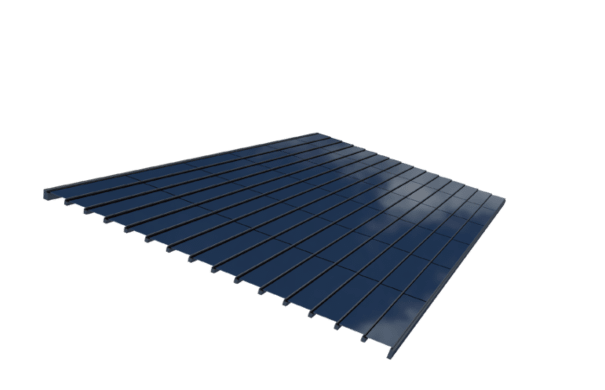
Rooftop PV Tiles
Rooftop PV tiles reduce roofing and slate/tiling costs while giving the roof an aesthetic look. They just look like a normal roof and are beautiful while standing out with a high efficiency. Thanks to new heat recovery technology, they reduce heating bills as well.
Our Household PV Tiles are similar in structure to the Standard Series, but with a fully tempered glass layer at the backside. In consequence, PV tiles offer better resistance against impacts from objects like hailstones.
Rooftop PV Tiles Models
RK-WN-RDN-K24
- Nominal Power (Pmpp): 32Wp
- Efficiency: 135W/㎡
- Short Circuit Current (Isc): 1.23A
- Open Circuit Voltage (Voc): 38.3V
- Current at Pmax (Impp): 1.06A
- Voltage at Pmax (Vmpp): 29.7V
Product Data
| Mechanical Specifications | |
| Dimensions | 400×600×6.8mm |
| Weight | 5kg |
| Area | 0.24㎡ |
| Structure | 3.2CdTe+0.5EVA+3.2FT |
| Type | CdTe |
| Support Layer | Black aluminum frame |
| Junction Box | Back,Side,Cable 2.5m㎡,650±10㎜ |
| Connectors | MC4 |
| Model Specifications | |
| Nominal Power (Pmpp) | 32Wp |
| Power Tolerance | ±5% |
| Short Circuit Current (Isc) | 1.23A |
| Open Circuit Voltage (Voc) | 38.3V |
| Current at Pmax (Impp) | 1.06A |
| Voltage at Pmax (Vmpp) | 29.7V |
| Specifications for System Integration | |
| Max System Voltage | DC1000V(IEC) |
| Max Reverse Current | 6 A |
| Snow Load | 5400 Pa(IEC) |
| Wind Load | 2400 Pa(IEC) |
| Temperature Range | -40℃~+85℃ |
| Anti-hail Range | IV |
| Protection Level | IP65 |
| Burning Class | A2 |
| Anti-hail Range | IV |
| Temperature Coefficient (Pmax) | -0.28%℃ |
| Temperature Coefficient (Voc) | -0.28%℃ |
| Temperature Coefficient (Isc) | +0.04%℃ |
RK-WN-RDN-K36
- Nominal Power (Pmpp): 49Wp
- Efficiency: 135W/㎡
- Short Circuit Current (Isc): 0.59A
- Open Circuit Voltage (Voc): 121.7V
- Current at Pmax (Impp): 0.52A
- Voltage at Pmax (Vmpp): 94.3V
Product Data
| Mechanical Specifications | |
| Dimensions | 1200×300×6.8mm |
| Weight | 7kg |
| Area | 0.36㎡ |
| Structure | 3.2CdTe+0.5EVA+3.2FT |
| Type | CdTe |
| Support Layer | Black aluminum frame |
| Junction Box | Back,Side,Cable 2.5m㎡,650±10㎜ |
| Connectors | MC4 |
| Model Specifications | |
| Nominal Power (Pmpp) | 49Wp |
| Power Tolerance | ±5% |
| Short Circuit Current (Isc) | 0.59A |
| Open Circuit Voltage (Voc) | 121.7V |
| Current at Pmax (Impp) | 0.52A |
| Voltage at Pmax (Vmpp) | 94.3V |
| Specifications for System Integration | |
| Max System Voltage | DC1000V(IEC) |
| Max Reverse Current | 6 A |
| Snow Load | 5400 Pa(IEC) |
| Wind Load | 2400 Pa(IEC) |
| Temperature Range | -40℃~+85℃ |
| Anti-hail Range | IV |
| Protection Level | IP65 |
| Burning Class | A2 |
| Anti-hail Range | IV |
| Temperature Coefficient (Pmax) | -0.28%℃ |
| Temperature Coefficient (Voc) | -0.28%℃ |
| Temperature Coefficient (Isc) | +0.04%℃ |
Choosing the Right Solar Panel
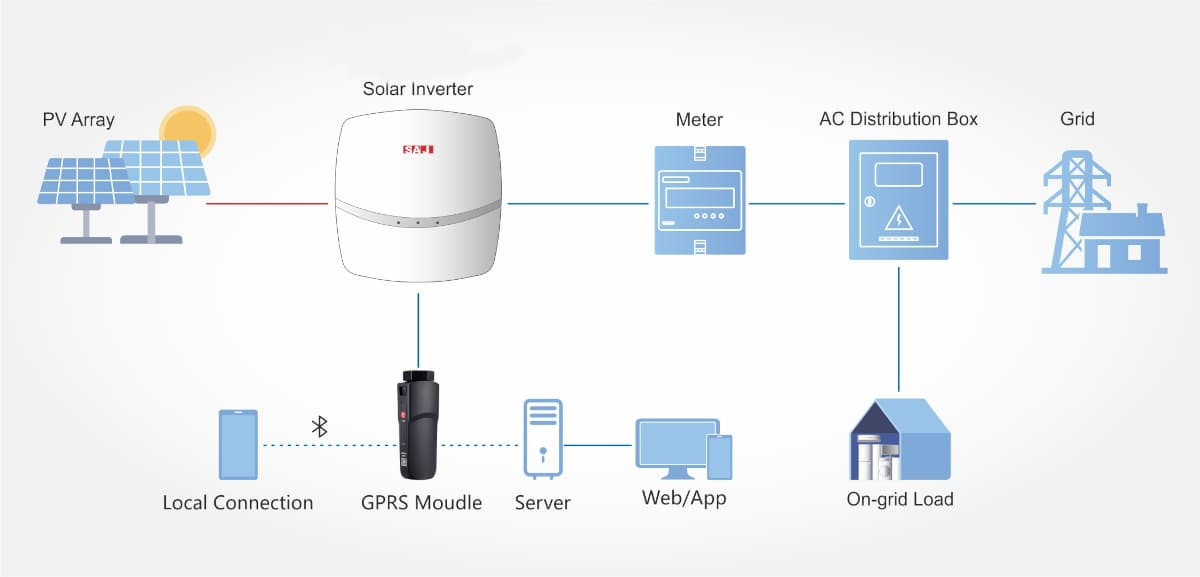
Solar panels convert direct or indirect sunlight into electricity, which then flows through a converter so it can be used to power devices.
A photovoltaic (PV) array acts as the root of a solar power system. While any part of the system can greatly impact its overall efficiency, this efficiency is governed in the first instance by the quality of the solar panels used in the array. There are many environmental and financial incentives for installing an efficient solar energy system: Not only do many governments offer tax credits to offset the initial cost, but home solar arrays can dramatically reduce your electricity bill.
How Solar Panels Work
Solar panels use the photovoltaic effect to generate electricity. They are made up of semi-conductive material which, when struck by light, absorb a part of the energy that the light is composed of.
This energy fires up some of the electrons in the material, which can then leave their bound position and move.
In so doing, they create an electrical charge. The electricity produced by the solar panels then has to be converted from direct current (DC) to alternating current (AC), which is done with solar inverters.
Will My Solar Panels Work Outside of Direct Sunlight?
It is natural to assume that solar panels only generate electricity if they are exposed to direct sunlight. However, this is incorrect: Solar panels work in any weather, albeit with reduced efficiency depending on how cloudy it is. This means that solar panels generate as much power during winter as they do during summer, as long as there is sunlight and they are not obscured. The only thing that will stop a solar cell from producing any electricity is being completely deprived of sunlight.
However, before making the decision to purchase solar equipment, you should still make sure that you will be able to use it effectively with your roof layout. If you are unsure if this is the case for you, your local solar installer will be happy to give you further information!
Types of Solar Panels
- Monocrystalline: Very efficient / expensive
- Polycrystalline: Less efficient / more affordable
- Thin-film: Less efficient / very flexible
The Solar Cell Technology behind Ruike Panels
Nano-cadmium telluride solar cells (CdTe) are thin-film solar cells based on heterojunctions of p-type CdTe and n-type CdS. A transparent conductive film (TCO) and a transparent high resistance transition (HRT) film are deposited on a glass substrate, then cadmium sulfide (n-type) and cadmium telluride (p-type) films are deposited by vapor transport deposition (VTD). The improvement of crystal structure and the activation of PN junction are accomplished through CdCl2 activation treatment.
A metal electrode (Mo/Al/Cr) is further deposited by physical vapor deposition (PVD), and a glass /TCO /CdS /CdTe/Mo/Al/Cr [cell] structure is formed. Butyl and EVA tapes are attached to the base of the cell, and then laminated and sealed by a laminator. At last a junction box is installed to complete the manufacture of a solar cell.
Why Invest Now?
There is no time like the present, especially when it comes to investing in solar panels for home applications.
Thanks to continuous innovation within the industry and large-scale production, the cost of solar panels in the UK and Europe has been plummeting in recent years, while their efficiency and quality have done the exact opposite.
With average household electricity rates going up and flexible financing options like solar panel grants and solar leases becoming available, installing a domestic PV system is now more cost-effective than ever.
![]() Get in touch to learn how you can take advantage of our sophisticated supply chain management system to keep transport- and solar panel costs to a minimum and increase your profit margins.
Get in touch to learn how you can take advantage of our sophisticated supply chain management system to keep transport- and solar panel costs to a minimum and increase your profit margins.
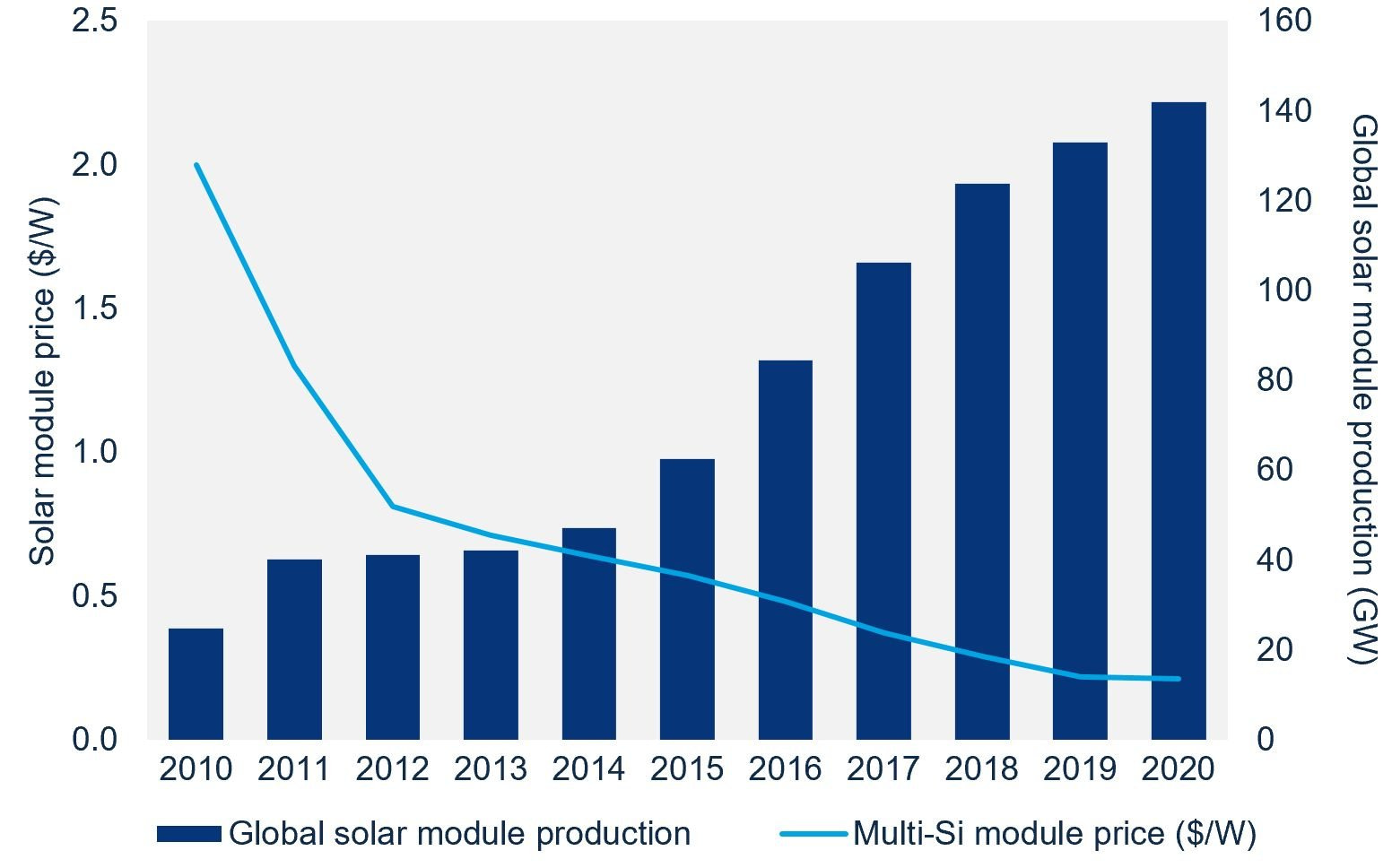
Source: Wood Mackenzie
Maintenance of Solar Panel Systems
Solar panels are very easy to maintain, considering they are advanced electrical equipment. Since they are constantly exposed to all kinds of weather, they need to be sturdy and weather-resistant right out of the box. Our Ruike Household PV Tiles and Standard Panels for example are IP65 water-resistant and have an impact resistance rating of 4. This means they are just as durable as regular roof shingles, maybe even more!
The only maintenance you will have to carry out regularly is cleaning your solar panels. There are differing opinions on just how regularly you need to do this, but generally speaking, once or twice annually should do the job. You can even enlist professional help, but this can be costly in the long run. We suggest investing in some equipment and doing it yourself, but remember: Safety first!
Only climb on your roof if it is flat enough to safely stand on, and do it from the ground if possible. If you have any safety concerns, listen to your gut and call a professional!
